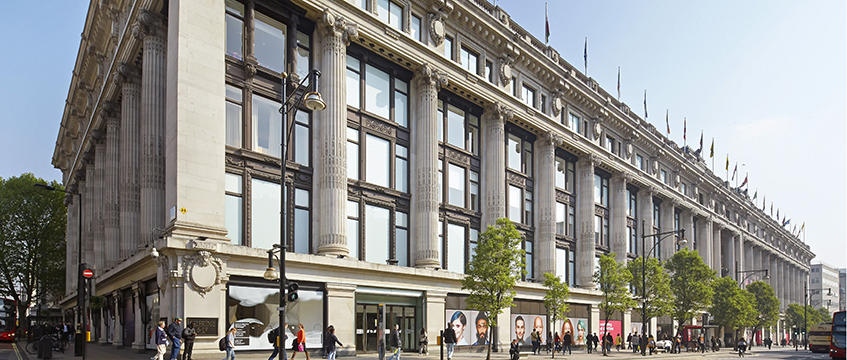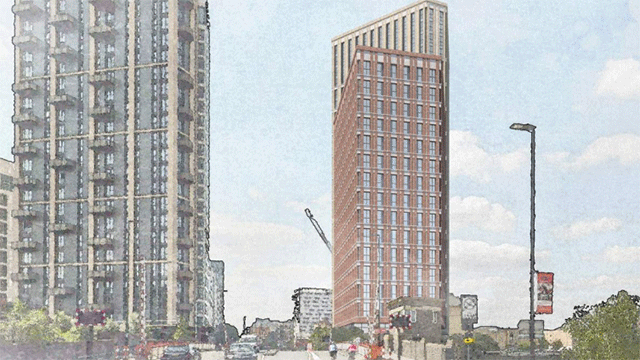COMMENT As 2023 came to a close, one of the most promising outcomes for our sector was the COP-announced Buildings Breakthrough.
Some 28 countries, representing around one third of the global population and the source of half of global carbon emissions, pledged to make “near-zero emission and resilient buildings” our “new normal” by 2030. This is a watershed moment for a sector which has long flown under the radar of climate analysts, despite contributing almost 40% of global emissions.
In future markets, built environment businesses will compete on their ability to deliver both positive climate and strong social impacts. We need to combine these two drivers – our decarbonisation journey is an opportunity to deliver better outcomes for communities, but we must understand there are also huge social risks.
Fundamental questions
The biggest risk is clear. In Europe, amid worsening housing crises and increasing homelessness, the development industry is being asked to choose a side of history.
As the market economics of delivery get harder, limited carbon budgets are rendering “building our way out” of the housing crisis unjustifiable. It is time to ask some fundamental questions: what are our buildings for, and who do they serve? How might we reorient the sector towards society’s needs, rather than a dependence on what financial markets are willing to fund?
A new research piece by Dark Matter Labs, holding both carbon neutrality and housing as a human right as the sector’s transition North Stars, shines a light on emerging alternative business models which offer the seeds of a healthier and fairer built environment.
Embedding communities
The mapping unearthed a rich landscape of civic sector organisations across Europe producing more sustainable and more affordable homes for people on low incomes.
From right-to-use cooperatives such as Sostre Cívic building exclusively in timber in Spain to community land trusts building permanently affordable housing in the UK, Belgium, the Netherlands and Germany. What these organisations have in common is that each embeds local communities into their governance model, suggesting that when end users are given true input, and even ownership, the environmental impact of delivering built spaces is also transformed.
The report also highlights the power of public-private-civic partnerships. Often supported by city or local government, they act as incubators and examples of equitable business models. For instance, Igloo’s project with Leathermarket Community Benefit Society and Southwark Council, Marklake Court, enabled deep collaboration between its partners to intensify the use of land, increasing the quantum of affordable housing in the borough in a climate-sensitive way.
The report also cites Agentur StadtWohnen Chemnitz in Germany, a private sector “matchmaker” that coordinates stakeholders, introducing developers and prospective tenants to the owners of dilapidated and vacant buildings, and Bright Green Futures, a UK-based eco-developer creating zero-carbon co-living communities.
Expanding the middle
What then of mainstream real estate businesses? Developers and propcos are starting to proactively consider the S in ESG, with scarcely a week going by without a new social value framework being published. Urban Land Institute’s 2024 survey of real estate trends revealed that investment decisions will be driven more by ESG and affordable housing than decarbonisation over the coming year.
Inequality is rising up the financiers’ agenda, with leading investors calling on peers to do more to address inequality, including setting up funds to tackle it.
The question is this: if the private sector is increasingly concerned with affordability and social impact, what will encourage it to act, as it is doing with its carbon commitments? Why are “purpose-with-profit” companies in real estate – such as Common Projects, Town and Igloo in the UK; Almenr and Home.Earth in Denmark; and Nightingale in Australia – still the exceptions? What will it take to expand this innovative and encouraging “middle” between market-led and community-led?
We need to see legislation, planning policy and financing move to support this new type of real estate business. We want to champion and expand the successes of institutional creativity, such as Aviva’s investment in Stories, and to see the scaling of bolder ways of carrying out development, like Archio’s much-praised Citizens House for London Community Land Trust.
What happens in this middle offers the seeds of a regenerative, inclusive built environment that might bring us within our one-planet boundaries.
Chris Brown is the founder of Igloo











